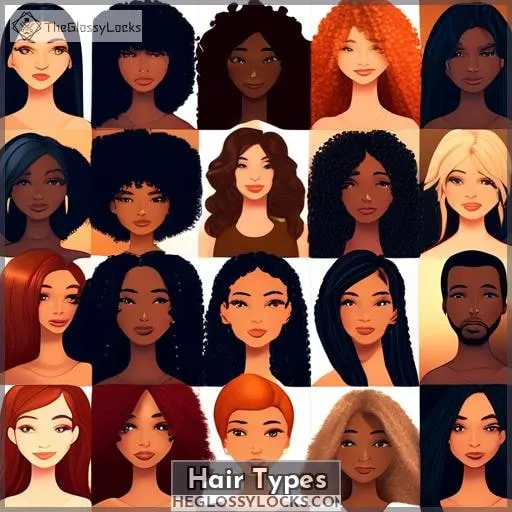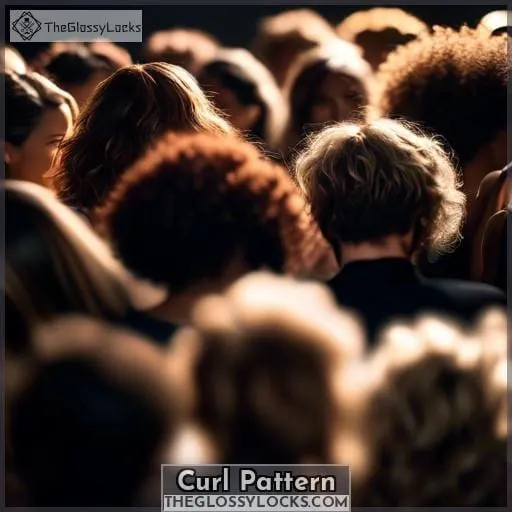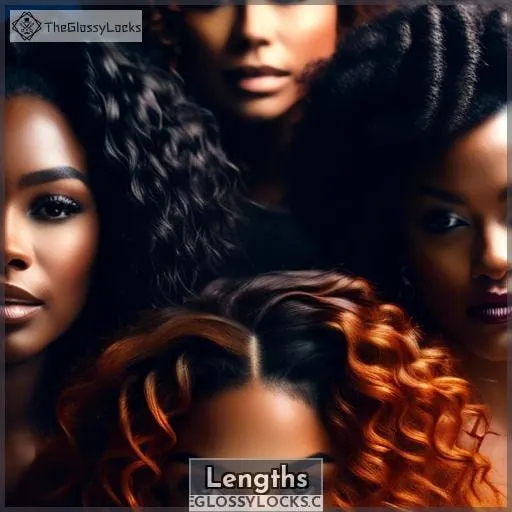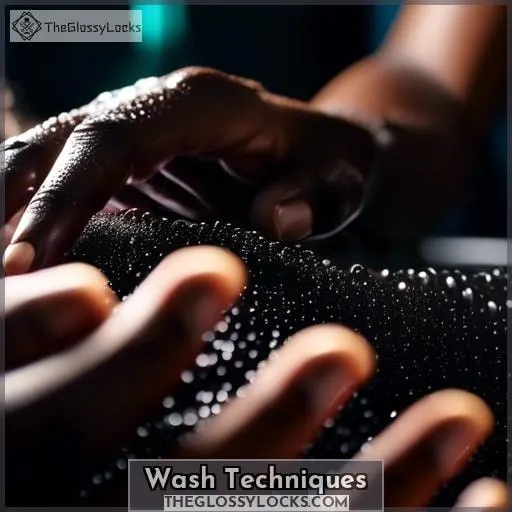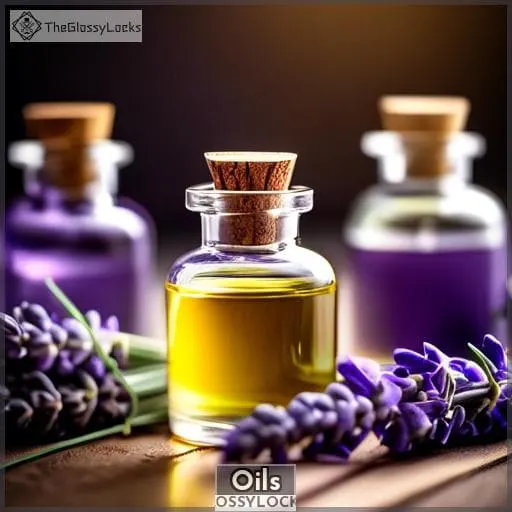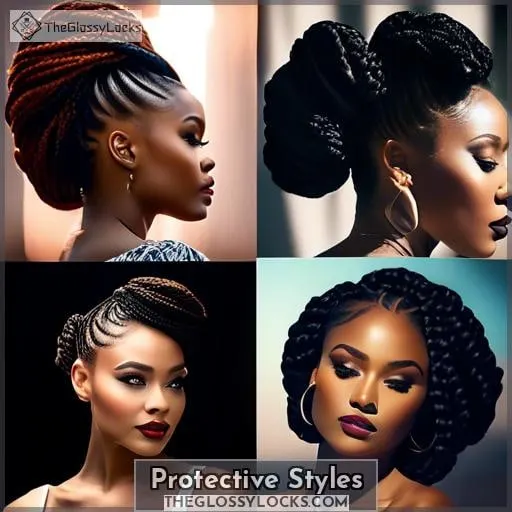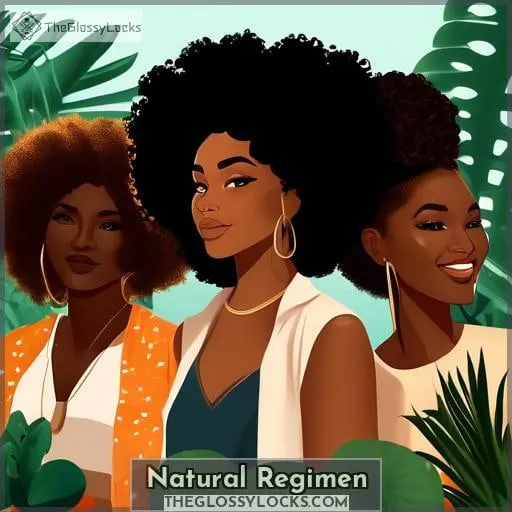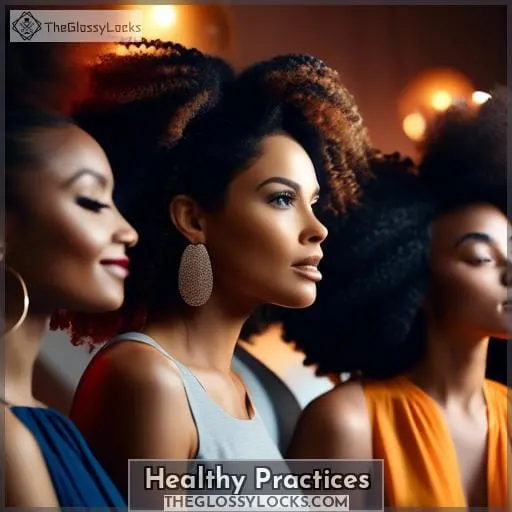This site is supported by our readers. We may earn a commission, at no cost to you, if you purchase through links.
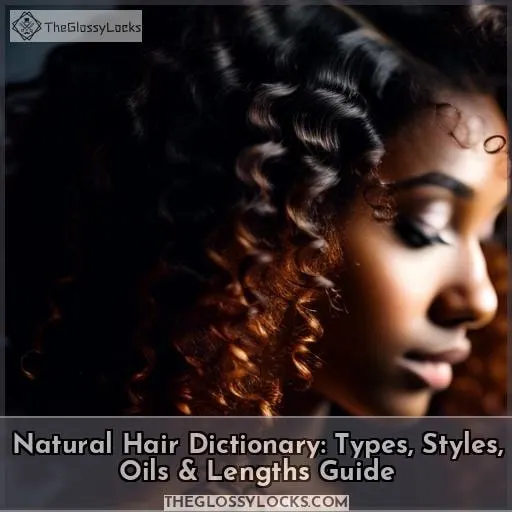 Embrace, explore, and empower—your natural hair journey starts here. In the world of coils and curls, understanding your unique texture is the key to unlocking a world of beauty and confidence.
Embrace, explore, and empower—your natural hair journey starts here. In the world of coils and curls, understanding your unique texture is the key to unlocking a world of beauty and confidence.
This Natural Hair Dictionary guides you through the essentials: from deciphering hair types and curl patterns to mastering styling techniques and nourishing oils. Whether you’re navigating the early stages of your journey or seeking to refine your regimen, you’ll find wisdom and warmth in these pages, inviting you to a community where you truly belong.
Table Of Contents
- NaturallyBeautifulHair #HealthyTressesEveryStepOfTheWay
- Styling Methods
- Oils
- Protective Styles
- Natural Regimen
- Healthy Practices
- Frequently Asked Questions (FAQs)
- How can I determine my hair’s porosity and why is it important for selecting hair care products?
- What are the common causes of scalp irritation in natural hair, and how can it be treated or prevented?
- How does the weather and environment affect natural hair, and what adjustments should be made to a hair care routine accordingly?
- Can diet and nutrition have an impact on the health and appearance of natural hair, and what specific nutrients are beneficial?
- What are the best practices for transitioning from chemically treated hair to natural hair without causing excessive damage or breakage?
- Conclusion
Key Takeaways
- Curl patterns range from loose ringlets to tight coils. Density and curl pattern influence styling choices.
- Coily and kinky hair benefits from moisture retention techniques, detangling, and scalp health maintenance.
- Length retention strategies, like protective styling, can aid growth for mid-back and longer styles.
- Following healthy hair practices for your porosity and texture builds elasticity and prevents damage over the natural journey.
Hair Types
Understanding your hair type is crucial for proper care and styling.
If you have 3A to 4C hair, you’re dealing with curls that range from loose ringlets to tight coils, each with its own unique needs.
Your hair’s density, or the number of strands per square inch, also plays a significant role in choosing the right products and styles to maintain healthy, vibrant locks.
3A to 4C
Understanding the four main hair types, from 3A to 4C, helps you identify your unique curl pattern and tailor your care routine accordingly.
- Curl hydration to maintain elasticity
- Frizz management for defined styles
- Moisture retention to prevent breakage
- Shrinkage control to showcase true length
- Overcoming styling challenges specific to coily and curly textures
Density
Types, Styles, Oils & Lengths Guide’:
The density of your hair determines what styles and products suit you best. Knowing your density helps avoid damage from over-manipulation. Those with fine or thinning hair face styling challenges and need gentle volumizing tips: use clip-in extensions for fullness when wearing curly styles, avoid tight updos causing traction alopecia, keep scalp healthy to promote regrowth.
Curl Pattern
Understanding your curl pattern is key to unlocking the best care and styling for your natural hair.
Whether you’re working with tight coils or looser ringlets, recognizing this aspect can guide you in selecting the right products and techniques.
It’s the foundation for embracing and enhancing the natural beauty of your hair.
Coils
Within your curl pattern, coils are the tightest forms of curls, ranging from the springy 3C to the densely packed 4C, each with its own unique beauty and care requirements.
Embracing these coils means mastering moisture retention and shrinkage management.
Effective detangling techniques and prioritizing scalp health are crucial.
Your journey with kinky hair enriches the natural hair community, offering insights and styles that celebrate our collective identity.
Ringlets
Variability in curl pattern is a hallmark of ringlets, which you’ll often find spiraling with bounce and vivacity in Type 3 hair.
Embrace ringlet enhancers for curl definition, mastering frizz management.
Styling ringlets without heat preserves their integrity, ensuring hydration remains a priority.
Dive into this natural hair dictionary for inspiration, transforming your ringlets into a symbol of natural beauty and liberation.
Lengths
Understanding the length of your natural hair is crucial as it not only marks your growth journey but also influences the choice of styles and care techniques.
Terms like CBL (Collar Bone Length), BSL (Bra Strap Length), and MBL (Mid-Back Length) help you set and achieve your hair goals.
They’re milestones that reflect your hair’s health and the effectiveness of your hair care regimen.
CBL
Transitioning from the previous discussion on curl patterns, it’s important to note that as your curls evolve, so does the length of your hair. Reaching Collar Bone Length (CBL) is a significant milestone in your natural hair journey, marking a transition from shorter styles to more versatility in styling options.
Achieving this length often involves a focus on length retention strategies, such as regular trims and deep conditioning treatments. Additionally, incorporating hair serums and considering treatments like laser therapy can further support hair health and growth.
With CBL, you’ll enjoy increased styling flexibility, allowing for a wider range of hairstyles that showcase your natural beauty.
BSL
While you’re celebrating the achievement of reaching collar bone length, you’ll find that bra strap length (BSL) is your next milestone, where your hair extends to the bra strap across your back.
Overcoming growth challenges and mastering length retention are key.
Acknowledge your hair’s terminal length, maintain regular trims for health, and always prioritize moisture balance to protect your strands on this natural hair journey.
MBL
After reaching your bra strap length hair, your next length goal can be mid-back length (MBL) hair, which typically hits around the bottom of your shoulder blades.
- Celebrate growth milestones to stay motivated.
- Focus on length retention with protective styles.
- Schedule regular hair trimming to prevent split ends.
- Maintain moisture balance with deep conditioning.
- Adjust your regimen as your hair flourishes.
Natural Journey
As you wave goodbye to the familiar territory of hair lengths, you embark on the transformative path of your natural hair journey. Transitioning is a time of rediscovery, where you nurture your emerging texture while bidding farewell to chemically straightened ends.
It’s a delicate dance of patience and care, as you learn the rhythms of your unique curls and coils.
| Transitioning Hair Tips | Texture Management |
|---|---|
| Scalp Care: Keep your scalp clean and stimulated to support healthy hair growth. | Texture Management: Embrace your natural texture by learning which products and techniques work best for your hair type. |
| Moisture Retention: Ensure your hair stays hydrated with regular deep conditioning treatments. | Hair Trimming: Gradually trim away processed ends to encourage your natural texture to thrive. |
Wash Techniques
Embrace your wash routine with techniques tailored specifically for naturally textured tresses!
Two essential methods you should know are co-washing—using conditioner instead of traditional shampoo to cleanse while maintaining hydration—and pre-pooing, which involves applying oils before washing to protect against dryness caused by harsh detergents.
These practices can help keep your kinks, waves, and curls healthy and vibrant throughout their journey from root to tip. Remember, every head of hair has unique needs; experiment until you find what works best for yours.
NaturallyBeautifulHair #HealthyTressesEveryStepOfTheWay
Co-Wash
Co-washing, a technique where you cleanse your hair with conditioner instead of shampoo, can help you maintain moisture and protect your hair’s natural oils.
It’s not just about hydration; it also supports scalp health, reduces environmental impact, and respects cultural practices.
Consider the ingredients in your conditioner and how water hardness affects your routine.
Co-washing goes beyond common topics, offering a holistic approach to hair care.
Pre-Poo
Pre-shampooing helps lock in moisture before you cleanse. By applying oils or conditioners, you’re setting the stage for enhanced moisture retention and scalp health.
Embrace pre-poo as your secret weapon for maintaining strong, hydrated locks and a nourished scalp, ensuring your hair’s resilience and vitality.
Styling Methods
When it comes to styling your natural hair, techniques like the Twist Out and Braid Out are essential for creating defined, beautiful curls. These methods not only enhance your hair’s natural texture but also help in retaining moisture and minimizing frizz.
They’re perfect for showcasing the versatility and beauty of your curls without the need for heat or harsh chemicals.
Twist Out
You’ll find the twist out method to be a versatile styling technique that creates defined curls by twisting sections of damp or moisturized hair and then unraveling them once dry.
- Product Selection: Choose the right products for hold and shine.
- Moisture Balance: Ensure hair is properly moisturized to prevent frizz.
- Drying Time: Allow ample time for hair to fully dry to maintain definition.
Braid Out
Transitioning from the twist out technique, a braid out offers a different approach to styling by intricately weaving your strands into braids for a defined, wavy look. This dry styling method enhances moisture retention and frizz prevention, making it a perfect addition to your nighttime routine.
Proper product application ensures your waves stay defined and luscious until the next wash day.
Oils
When it comes to maintaining the health and vitality of your natural hair, oils play a crucial role.
Castor oil, with its rich fatty acid content, can deeply moisturize your hair follicles, promoting a healthy scalp and potentially aiding in hair growth.
Meanwhile, coconut oil is celebrated for its ability to penetrate the hair shaft, reducing protein loss and keeping your strands resilient and lustrous.
Castor
Massaging castor oil into your scalp can stimulate growth by increasing blood circulation. Its rich fatty acids nourish your roots, promoting scalp health and preventing hair felting.
The moisturizing properties of castor oil not only enhance hair thickness but also ensure your strands are deeply conditioned.
Embrace this natural elixir to fortify your hair’s foundation and unlock its full potential.
Coconut
Penetrating strands deeply, coconut oil seals in moisture while stimulating growth. It’s a powerhouse with multiple benefits, not just for your tresses but also in cooking and skincare.
Whip up a hair mask to restore elasticity or add it to your diet for its nutritional value.
Its versatility extends to skincare benefits, nourishing and protecting your skin.
Protective Styles
When considering protective styles for your natural hair, weaves and wigs stand out as excellent options for maintaining hair health and promoting growth.
These styles not only shield your strands from environmental stressors but also give you the freedom to experiment with different looks without altering your natural hair.
It’s crucial to choose quality materials and ensure proper installation to prevent any damage to your hair and scalp.
Weaves
Weaves, as a protective style, offer you the versatility to experiment with different looks while safeguarding your natural hair from environmental stressors and manipulation.
Mastering weave integration and installation techniques is crucial for a seamless appearance.
Proper extension maintenance ensures longevity, while choosing synthetic textures can offer affordability.
Wigs
While wigs offer the versatility of changing your hairstyle without manipulating your natural hair, they also serve as a protective style that can prevent damage and promote hair growth when used correctly.
- Wig Storage: Preserve wig longevity by storing on a mannequin or in a silk bag.
- Color Customization: Experiment with hues without dyeing your natural strands, ensuring heat resistance.
- Styling Tools: Use proper tools to maintain the wig’s integrity and appearance.
Natural Regimen
To maintain the health and vitality of your natural hair, it’s essential to establish a consistent and personalized natural regimen. This regimen will encompass various practices and routines tailored to your hair’s specific needs, ensuring its strength, moisture, and overall well-being.
Prioritize scalp health by using gentle cleansers that remove buildup without stripping natural oils.
Understand your hair porosity to select products that optimize moisture retention.
Regular styling can stress your strands, so balance protective styles with rest periods.
Adhere to a trim schedule to prevent split ends and promote growth.
By committing to these practices, you’ll nurture your hair, keeping it robust and lustrous.
Healthy Practices
In maintaining your natural hair’s health and vitality, regular trims and deep conditioning treatments are essential.
Trims help prevent split ends and promote healthier hair growth.
Deep conditioning restores moisture and elasticity.
These practices are foundational to keeping your curls looking their best.
Trims
Regular trims are essential for maintaining the health and appearance of your natural hair.
Ignore myths; trimming doesn’t speed up growth but maintains it. Opt for dry cutting to accurately shape and style.
Enjoy a fresh look post-trim. Trim frequency should be tailored to your hair’s needs.
Deep Conditions
Following regular trims, you’ll want to incorporate deep conditioning into your hair care routine to restore moisture and enhance elasticity.
This crucial step boosts moisture retention, maintains protein balance, and aids in breakage prevention.
Whether you’re dealing with heat treatment aftermath or color maintenance, a deep conditioner is your go-to for keeping those curls healthy, vibrant, and strong.
Frequently Asked Questions (FAQs)
How can I determine my hair’s porosity and why is it important for selecting hair care products?
To determine your hair’s porosity, drop a clean strand into water. If it floats, you’ve got low porosity. It’s key for choosing products. High porosity needs more protein to stay strong and hydrated.
What are the common causes of scalp irritation in natural hair, and how can it be treated or prevented?
Common causes of scalp irritation in natural hair include product buildup, dryness, and reactions to hair care ingredients.
- Regular cleansing to remove buildup
- Moisturizing with natural oils like coconut or almond
- Avoiding irritants
For immediate relief, consider soothing oils or a gentle shampoo designed for sensitive scalps.
How does the weather and environment affect natural hair, and what adjustments should be made to a hair care routine accordingly?
The weather can wreak havoc on your natural hair. Hot, humid weather can cause frizz, while cold, dry weather can make hair brittle.
Adjust your hair care routine accordingly by using products that are designed to protect hair from the elements.
Can diet and nutrition have an impact on the health and appearance of natural hair, and what specific nutrients are beneficial?
Just as a garden thrives with a blend of sunlight and rain, your hair blossoms with a diet rich in proteins, vitamins, and minerals.
Omega-3s, zinc, and iron are particularly nourishing.
What are the best practices for transitioning from chemically treated hair to natural hair without causing excessive damage or breakage?
To transition to natural hair, gradually trim chemically treated ends.
Deep condition regularly.
Minimize heat styling.
Use protective styles like twists or braids to prevent breakage.
Conclusion
Your natural hair dictionary journey has been nothing short of epic! You’ve navigated the labyrinth of locks, from the springiest 3A curls to the most robust 4C coils. You’re now armed with the secrets of lengths that stretch from collarbone to mid-back, and you’ve mastered the art of protective styling.
Embrace your hair’s unique narrative, and let your strands shine with the wisdom of healthy practices.
Go forth and flaunt your natural crown with pride!

